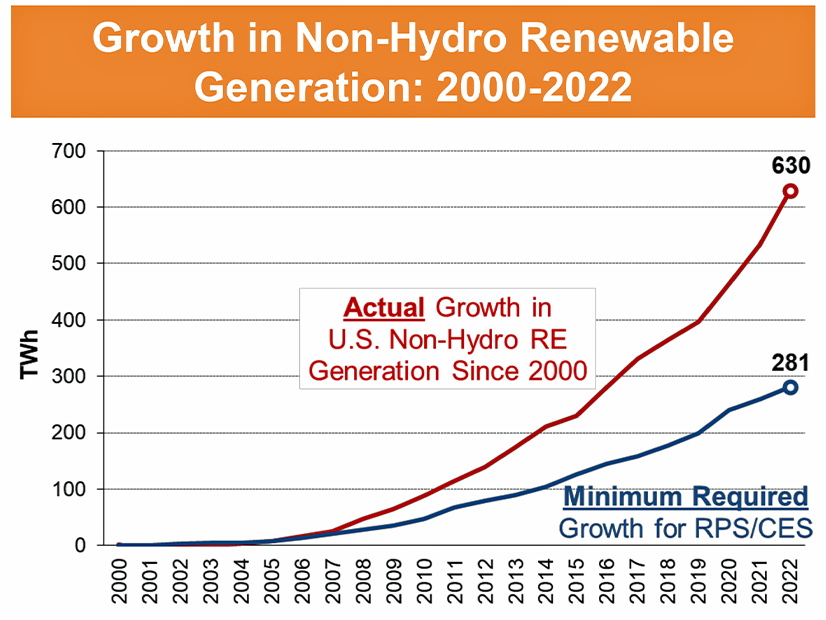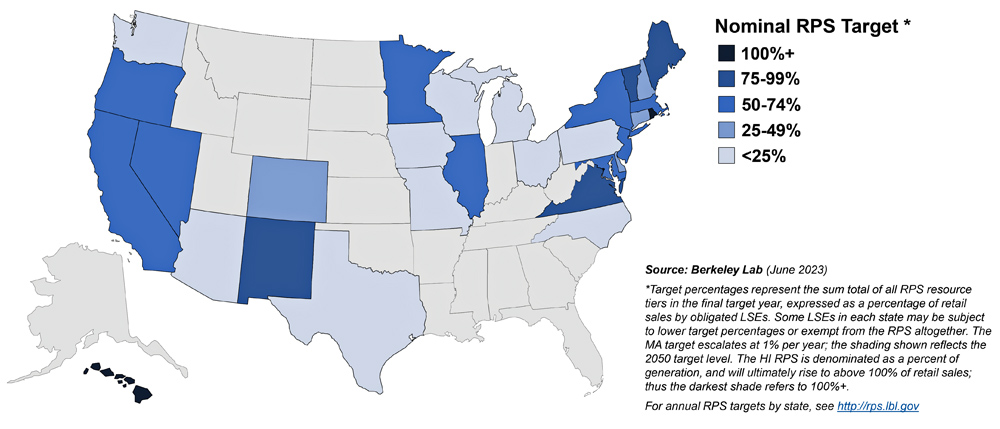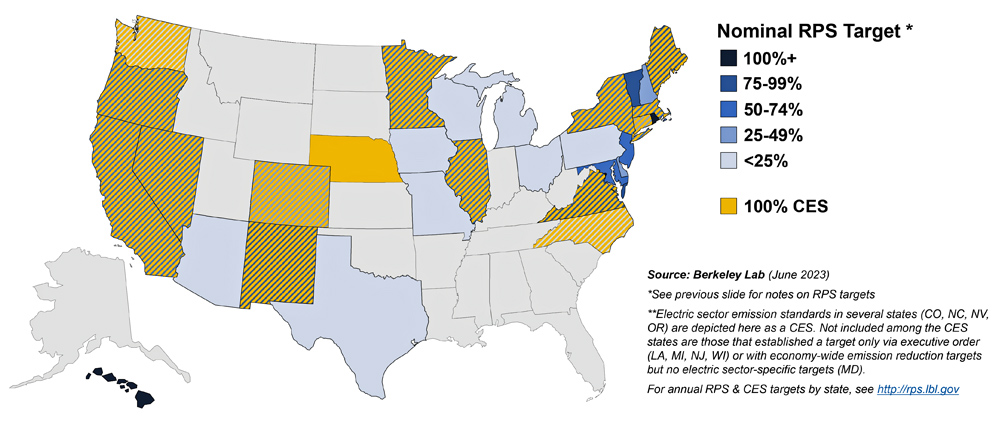
The Lawrence Berkeley National Laboratory on Wednesday issued the 2023 edition of “U.S. State Renewables Portfolio & Clean Energy Standards,” which finds that states are mostly meeting their renewable energy goals.
The report provides an update on legislative revisions and progress toward targets in the renewable portfolio standards (RPS) adopted by 29 states and the District of Columbia. Those 30 RPS policies apply to 58% of U.S. retail electricity sales.
New in this year’s edition is a look at clean energy standards (CES). Fifteen states have established a 100% CES, most of them in combination with an RPS.
The report and spreadsheets of supporting data are on Berkeley Lab’s website.
Among the highlights:
-
- Roughly half of nationwide growth in renewable energy generation since 2000 is associated with state RPS requirements, but the annual percentage has been declining, with only 30% of renewable capacity added in 2022 being attributable to RPS mandates.
- RPS and CES policies will require about 300 TWh of additional clean energy supply by 2030 and 800 TWh by 2050.
- RPS compliance accounts for 3.5% of retail electricity bills on average, but actual impact varies significantly, ranging from below 1% of retail bills in Texas, which met its final RPS target 15 years ago, to 12% in Massachusetts, where solar renewable energy certificates are the most expensive.
- On-site or behind-the-meter projects have been growing slowly as a percentage of renewable energy capacity but surged to 30% of new renewable power in 2022.
The report notes that RPS and CES standards continue to evolve. In 2022 and the first quarter of 2023, some 150 pieces of RPS- and CES-related legislation were introduced — 63 of which would strengthen the standards and 32 of which would weaken them.
However, only 17 of those bills had been passed when the authors gathered their data. And 13 of those were only peripheral to the standards or had a neutral effect on their strength.
But four major revisions were enacted:
-
- Connecticut created a CES calling for 100% zero-carbon electricity by 2040;
- Minnesota established a 100%-by-2040 CES and increased its RPS to 55% by 2035;
- Rhode Island increased its RPS to 100% by 2033;
- Hawaii effectively raised the target of its RPS by basing it on percentage of total generation rather than retail sales.
Excluding hydropower, U.S. renewable energy generation has grown by 630 TWh this century, significantly more than the 281 TWh mandated via RPS or CES policies.
The authors note that multiple factors are driving the growth of renewable energy, including other state policies, federal tax credits, green power markets, declining cost for renewables, utilities’ integrated resource planning, net-metered solar and voluntary green power markets.
Given the number of potential factors, and the potentially overlapping or synergistic relationships among them, assigning an incremental impact to an individual RPS or CES policy can be difficult, the report notes.
The authors say the future impact of RPS and CES programs will depend on factors such as whether states decide to expand their targets; what kind of implementation and enforcement mechanisms states establish; the impact of federal attempts to stimulate creation of new clean energy supplies and transmission; and cost trajectories for renewable energy and renewable energy certificates.


